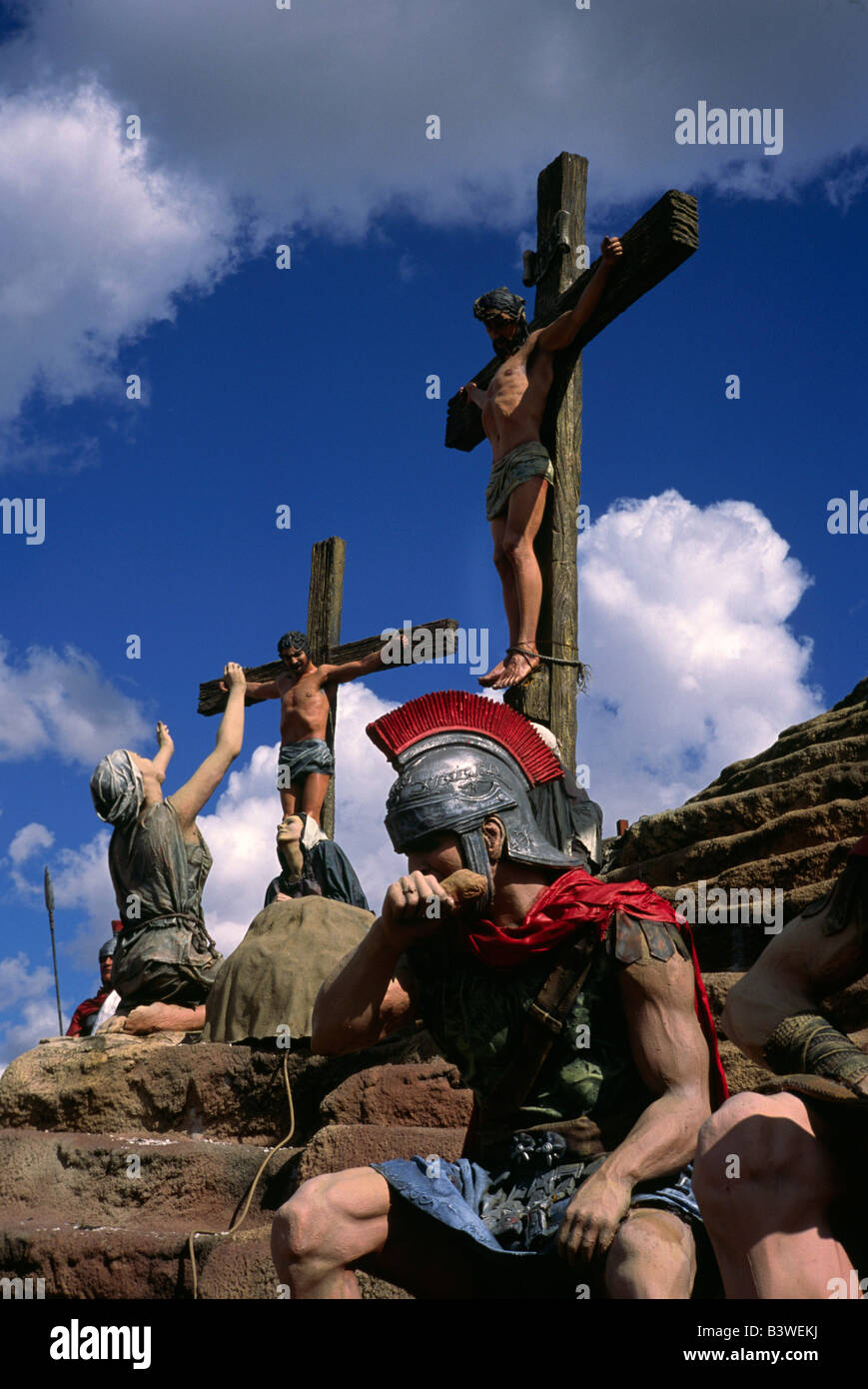

I would think that an incident as magnificent as this would be recorded in every Gospel. I am not sure why the account of the soldiers falling down in worship is added to the account of John. Judas does not play a role in the identification of Jesus as he does in the Synoptic Gospels. They ask “Where is Jesus of Nazareth?” and Jesus responds “I am He”. In the account of John (chapter 18) it is explained in a different way.

Jesus then calms his disciples down and goes peacefully with the guards. Then one of Jesus’ followers cuts off the ear of one of the guards. They explain how Jesus was teaching to a crowd when Judas comes up to kiss him on the cheek. Matthew, Mark, and Luke (the Synoptic Gospels) all have a fairly consistent account of what happened when Jesus was arrested. It is very interesting to examine the different accounts of Jesus’ arrest. It is hard to know what the solders expected when they went out to the garden, but it was not hearing the voice of God, so powerful that they are driven back in worship! Why does John include this rather spectacular response to the words of Jesus? Is he intentionally alluding to the Hebrew Bible when he says “I Am” or is this a coincidence?

Jesus asks the crowd who they are seeking, recalling the first words of Jesus in the book, spoken to two disciples who began to follow him: “What do you want?” When a group representing the whole world arrives, Jesus demands to know their intentions. Jesus’ response is “I am,” and the guards and soldiers “fell to the ground.” The phrase is rare, the adverb χαμαί appears in Job 1:20, Job “fell to the ground in worship” (cf., Dan 2:46 (Old Greek), Nebuchadnezzar fell to the ground to honor Daniel, also Ant. When Jesus speaks, the crowd “drew back and fell to the ground” (18:4-7).
ROMAN SOLDIER JESUS FULL
But the detail has the ring of truth to it, since even during a full moon additional light was needed to find a man camping in an olive garden! The arresting guards carry “lanterns and torches,” a detail which is sometimes questioned since Passover occurs at the full moon. That the arrest occurs at night is important, since Jesus is the light of the world, yet the world prefers to remain in the darkness. Darkness and light are powerful images in the Gospel of John. Both come to arrest Jesus and both will have a hand in his execution. Second, the two groups represent both Jews and Gentiles. The Romans therefore were present to “keep the peace,” or at the very least they were there to keep Jesus from initiating a nationalistic riot. Jesus was claiming to be the anointed one of God, he selected twelve disciples who form a new Israel: he rode a donkey into Jerusalem just as Solomon did when he was crowned king, the son of David. That imagery was a vivid reminder that the Romans were now the power which “enslaved” God’s people. Passover was a celebration of the Exodus, the time when Israel’s God redeemed his people from their slavery. First, it is historically plausible that the Romans would assign a few soldiers to accompany the Temple guards to arrest Jesus. Two observations are important about these two groups of soldiers. The solders include Temple guards (who make the actual arrest) and Roman soldiers. In addition, it is possible that another person could substitute themselves for Jesus, Judas provides a positive identification of his master. It is likely that there are a number of campsites on the Mount of Olives, the Passover crowds probably made finding the exact spot where Jesus was nearly impossible. Judas’s role as betrayer is to lead the temple guard to the place where Jesus is camping. Judas leads a group of soldiers and guards to the garden to arrest Jesus (John 18:2-9).


 0 kommentar(er)
0 kommentar(er)
